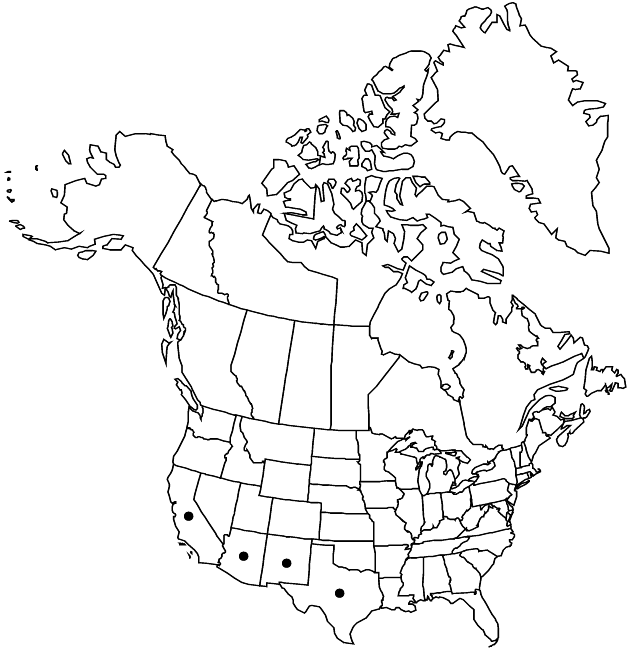Ambrosia monogyra
Madroño 49: 143. 2002.
Shrubs, 30–150 (–400) cm. Stems erect. Leaves mostly alternate; petioles 0; blades mostly filiform, 5–30 (–65+) × 0.5–1.5 mm, sometimes with 3 (–5+) filiform lobes, abaxial faces glabrous or glabrate, often vernicose, adaxial faces densely scabrellous (white). Pistillate heads ± intermixed with staminates; florets 1. Staminate heads: peduncles 0–0.5 mm; involucres ± cupshaped, 2–4 mm diam., ± glabrate, ± vernicose; florets 5–12+. Burs: bodies fusiform to pyriform, 4–5 mm, stipitate-glandular, wings 7–12+, mostly around middles, oblanceolate to cuneiform, 2–3 × 1–2 mm. 2n = 36.
Phenology: Flowering (May–)Aug–Nov.
Habitat: Desert washes, ravines
Elevation: 10–500 m
Distribution

Ariz., Calif., N.Mex., Tex., Mexico (Baja California), Mexico (Baja California Sur), Mexico (Chihuahua), Mexico (Sinaloa), Mexico (Sonora)
Discussion
Ambrosia monogyra may occur in western Nevada.
Selected References
None.
Lower Taxa
"stipitate-glandular" is not a number.